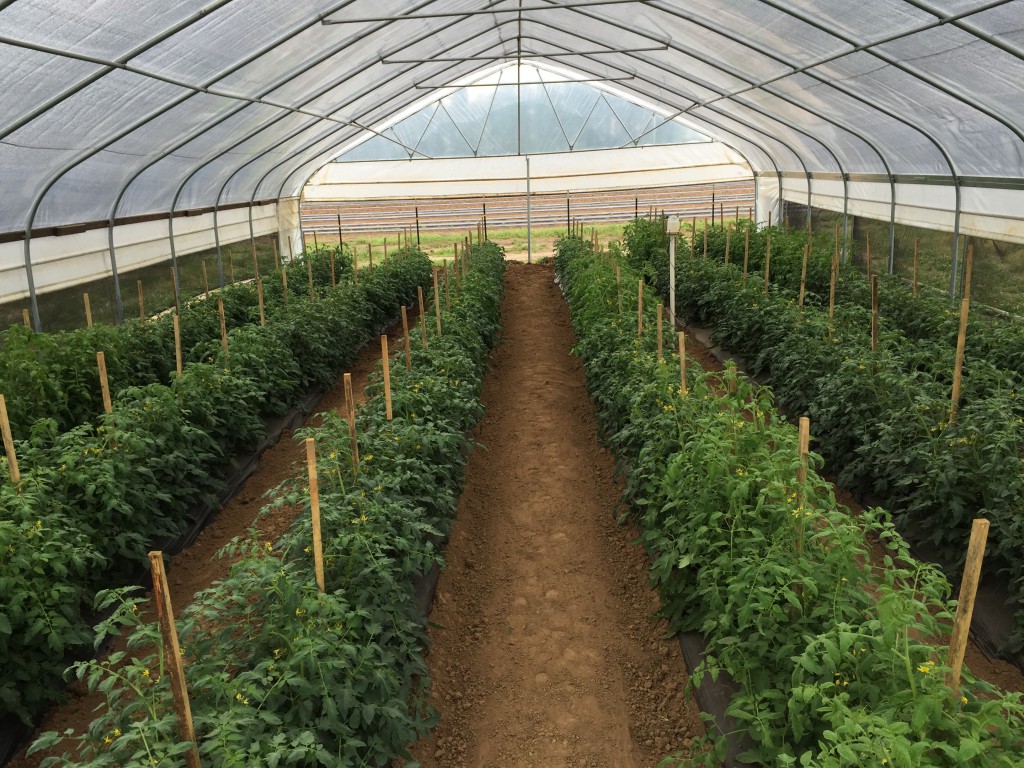By Blake Thaxton

High tunnel Tomato Crop at UF/IFAS WFREC
High tunnel crop production has steadily increased in Northwest Florida, with many utilizing funding from the Natural Resource Conservation Service’s (NRCS) Environmental Quality Incentives Program (EQIP). There are many benefits to high tunnel production with crop earliness being the most talked about. Another major benefit being observed through trials in Jay, FL, at the UF/IFAS West Florida Research and Education Center includes reduced disease occurrence, specifically foliage diseases on tomatoes.
One problem that has been observed, however, is insect pest populations in the structures. Stinkbugs, Leaffooted bugs, various caterpillar pests, and spider mites, have all been problems in the trials conducted this year. Control of some of these pests can be difficult in high tunnels, particularly for those growers opting for organic production practices.

Net house exclusion technique for pepper crop
One option that has been studied at Auburn University and the Alabama Cooperative Extension Service is that of exclusion by providing a barrier in which the insect cannot cross. A high tunnel can be retro-fitted with shade-cloth blocking the opening fairly inexpensively to exclude leaffooted bug, squash bugs, cabbage loopers, and others. With a 40% shade cloth barrier, these pests will be excluded while still allowing beneficial lady beetles through. See the full publication from Southern SARE: High Tunnel Pest Exclusion System A novel strategy for organic crop production in the South. Similar results can also be achieved in shade house structures as seen in the photos above.

Stinkbug & Leaffooted bug damage can make the fruit unmarketable
Observations from this year’s trials were that Bt (Bacillus thuringiensis) had good efficacy on controlling caterpillar pests, if targeted when worms were still small. Mites were very damaging in the hot dry environment of the high tunnel. Efforts were made to slow down the infestation with horticultural oil + aziderachtin and horticultural oil + pyrethrin tank mixes. These applications had limited success. Populations were very high by the time it was addressed late in the crop season, therefore the control methods used were mainly an attempt for suppression.
Source: ufl.edu